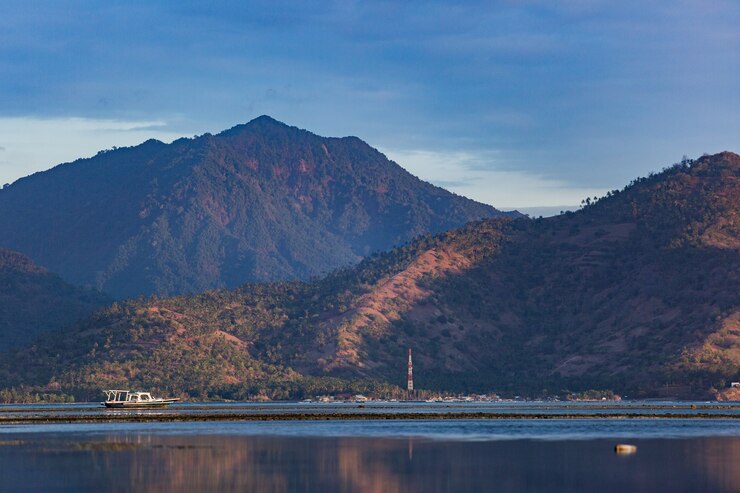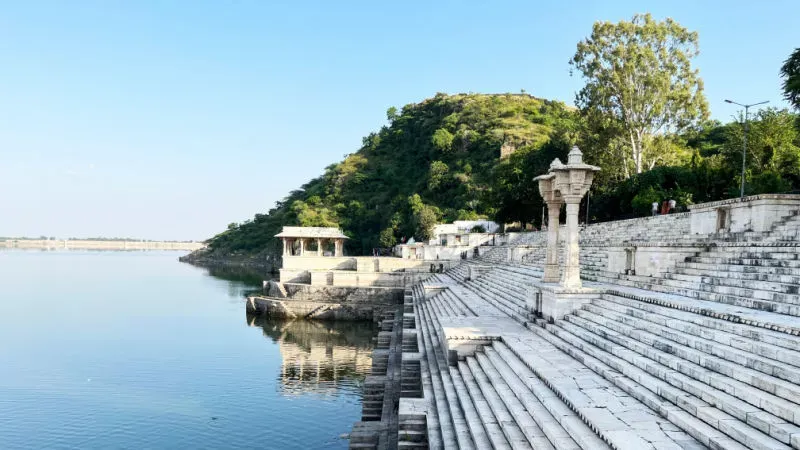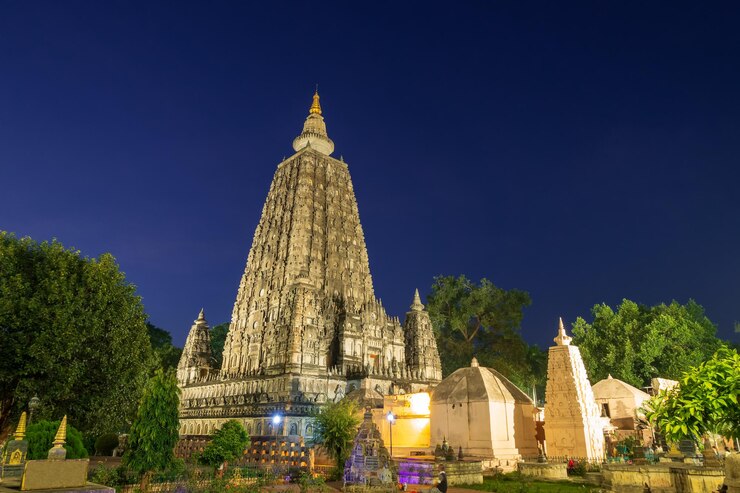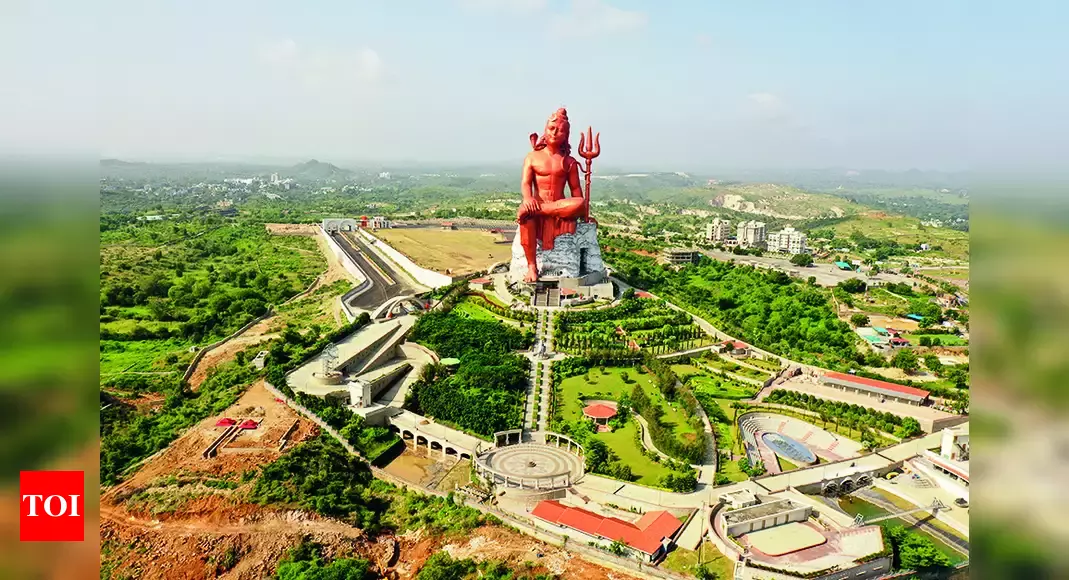Featured
15% Off
2N Ahmedabad + 2N
Dwarka + 1N Somnath + 1N Mount Abu + 1N Nathdwara
Tour Type
Adventure,
Foodie
Location
Ahmedabad Dwarka Somnath Mount Abu Nathdwara
Monument Entrance Fee.
Services of English-Speaking Local Guide.
Game Drive at Sasangir National Park or any other national park.
Expense of personal nature like tipping, laundry, telephone / fax calls,
alcoholic beverages, camera/video camera fee at monuments, medical expenses,
airport departure tax etc. Any other services not mentioned in the inclusions.
International or Domestic airfare / Train Fare.
Any expenses caused by reasons beyond our control such as roadblocks, accidents
& any medical evacuations. Any train delays, or re-scheduling etc. Any Visa
fees, insurance fees, etc. Any tips to hotel staff, local guides, drivers etc.
Any meals apart from the ones mentioned above. Any expenses apart from the ones
above.
Personal Expense Such Telephonic calls, Camera, Laundry charges, Internet, Tips,
etc
Any Major Meals i.e. Lunch or Dinner if not specified in inclusion list
Flight Tickets or Visa is not included in above cost
GST will be applicable extra as per Govt. regulations
RT PCR if applicable is not included
Any Kind of Travel or Health Insurance is not included in mentioned cost.
Guide is not included in above package.
All personal expenses like tips, Portage, laundry, telephone calls/fax,
alcoholic beverages, camera/video camera fees at monuments, entrances fees,
medical expenses, airport departure tax etc.
Cost incidental to any change in the itinerary/stay on an account of flight
cancellation due to bad weather, ill health, and roadblocks and/or any factors
beyond control.
For any unutilized service no refund will be provided
Sightseeing as per the itinerary. Vehicle not at disposal basis.
Services of vehicle on leisure days
Tips, insurance, laundry, phone calls
Any kind of drinks (alcoholic, mineral, aerated)
Guide fee, camera fee
Anything not specifically mentioned under the head “package includes”.
Any Tips to Driver & Guide
Lorem ipsum dolor sit amet consectetur adipiscing elit Ut et massa
mi.
Aliquam hendrerit
urna. Pellentesque sit amet sapien fringilla, mattis ligula consectetur,
ultrices Maecenas
Include/ Exclude
-
Accommodations
-
Meals
-
Transportation
-
Activities
-
Guides
-
Airfare
-
Additional Meals
-
Optional Activities
-
Travel Insurance
-
Personal Expenses
Tour Plan
Arrived in Ahmedabad
Ahmedabad is Located on the banks of the river Sabarmati;
the city was founded by Sultan Ahmad Shah in 1411. Today it
is one of the fastest growing cities of India and is an
immense repository of tradition, history & culture. Its
famous walled area is one of the finest examples of
community living & the city thrived as the textile capital &
was nicknamed “Manchester of the East' in 1888. This
multicultural city is home to some of the finest
Indo-Saracenic mosques & Jain temples.The old city of
Ahmedabad is dotted with labyrinthine by-lanes called
'polls'. The exquisite carved wooden mansions and havelis
are marvelous. The city also offers a rich architectural
legacy that blends Hindu and Muslim schools of architecture,
stone and brick with arches, domes and vaults, carved
pillars, trefoil designs besides the modern buildings
designed by the famous French architect, Le Corbusier, and
Louis Kahn.
Later visit Dakor Temple – The main temple, enclosed by a
fort wall, is situated near the bank of the holy lake Gomti
in the midst of the main bazaar of Dakor. The temple is
covered with 8 domes and 24 turrets, with the central dome
reaching a height of 27m. Crowned with a golden kalash and a
white silken flag, this temple is the tallest in the
district. Though not very rich in carving, the main cupola
derives its influence from the Maharashtrian style of temple
architecture. The main hall features paintings depicting
events in Lord Krishna’s life.
It is believed that Ranchhodji, a name for Lord Krishna
meaning "he who left the battlefield", inspired Gopal
Jagannath Ambekar, a shroff of a Peshwa’s court in Poona, in
a dream to build a vast and magnificent temple. The temple
was built in 1772 A.D. The main Ranchhodrai idol is in black
touchstone, 1m tall and 45 cm in breadth, richly adorned
with gold, jewels and expensive clothes. Its throne, an
ornate masterpiece of woodcarving plated in silver and gold,
was presented by the Gaekwads of Baroda. Later drive back to
Ahmedabad. Evening Market at Law Garden displays beautiful
textile handicrafts of Gujarat. Must visit to experience the
local culture and cuisine and also shop for hand embroidered
garments.
Overnight at hotel
- Sight Seeing Included:
- Patwaon Ki Haveli / Salim Singh Ki Haveli /
Nathmal Ki
Haveli
- Airport to Hotel : PVT Transport
AHMEDABAD TO DWARKA
After breakfast drive to Dwarka enroute visiting
Swaminarayan Temple in Rajkot. Later continue to drive to
Dwarka and transfer to your hotel. The small coastal town of
Dwarka is one of the four most holy Hindu pilgrimage sites
in India. It is here that Krishna founded his capital after
leaving Mathura. Excavations have revealed 5 earlier cities
at the site, all submerged. The present town dates largely
to the 19th century and attracts thousands of pilgrims to
celebrate the Holi, Diwali and Janmashthami festivals. The
temple is mainly known for the Hindu Pilgrimage site of
Dwarkadhish Temple. There also is a multi-pillared Sabha
Mandapa leads to a 60 pillared sanctum sanctorum that dates
back 2500 years according to the scriptures.
Overnight at hotel
Breakfast Included
DWARKA TO SOMNATH
Early morning visit the Dwarkadhish Temple and witness the
Aarti.
After breakfast drive to Somnath visiting Porbandar enroute
visit Porbandar, the coastal heritage town of Gujarat is
located on the Saurashtra peninsula, on the Arabian Sea.
This city is described in Skanda Purana as Sudamapuri and
Ashmavati and had a flourishing trade with Africa and
Arabia. Till date, the spice market in Porbandar draws a
huge crowd. According to the legends, this city was the main
link of the great friendship between Lord Krishna and
Sudama. Porbandar was established as a capital by Rana
Sartanji in 1785 AD. Porbandar was the former capital of the
Jethwa Rajput petty princely state. The most impressive
feature of Porbandar is the city planning and the stone
buildings with ashlar masonry and rich carving, the facades
of the houses on either side of the streets, with windows
and carved gateways. Porbandar is also associated with
Mahatma Gandhi, the father of the nation as he was born
here. Today, fine quality silk and cotton are manufactured
here. There are also chemical factories and cement works.
Later visit Kirti Mandir – Kirti Mandir was the house of
Mahatma Gandhi and Kasturba, his wife. This place is
situated near the place where the Mahatma was born. This
place is now a small museum and also has a Gandhian library
and a prayer hall. Bharat Mandir is another place to visit,
which houses relief map of India and reliefs of great
historical personalities who shaped India’s future.
Visit - Sudama Dwarka Temple, this temple is dedicated to
Sudama who was the childhood friend of Lord Krishna. Located
at the centre of Porbandar, it is one exceptional temple in
India which is dedicated to this great devotee of Lord
Krishna. Built with white marble this temple has a number of
carved pillars which decorate the temple, open from all
sides this temple has a shikhara which is decorated with
splendid architecture and carvings. These carvings are also
visible above the pillars and the arches which adjoin the
pillars. With such architecture, this temple is dedicated to
the shrine of Sudama which is built in simple structure.
Later continue to drive to Somnath; arrive at Somnath and
transfer to your hotel.
Somnath consists of a few streets
leading away from its phoenix like temple. The rugged sea
below gives it a lonely, wistful charm. Somnath is mainly
known for the legendary shore temple of Somnath, which is
dedicated to the Lord Shiva. The temple is an example of
grit and determination and how to rise out of downfall as
the temple has been plundered and destroyed many times and
re-erected again in all its glory. To be precise, destroyed
seven times and built eight! The legendary shore temple of
Somnath is one of the twelve most sacred shrines dedicated
to the Lord Shiva. The temple contains the Jyotirlinga of
Lord Shiva. According to the legends, the Somnath temple is
incredibly old and was originally built-in gold by the
Somraj, the Moon God. Later, it was rebuilt by Ravana, in
silver; then by Krishna in wood and Bhim Dev in stone.
Mahmud of Ghazni, upon hearing the description of the
richness of the Somnath temple by Al Biruni, an Arab
traveller, visited this temple in 1024 AD. At that time,
this temple had about 300 musicians, 500 dancing girls and
300 barbers to shave off the heads of pilgrims. After a two
day’s battle, Mahmud destroyed the temple and carried away
jewels and gold to his homeland. In all, the Somnath temple
was rebuilt and destroyed eight times. This temple was
finally rebuilt in 1950 with the support of Sardar
Vallabhabhai Patel. The current temple was built as per the
traditional designs on the original site by the sea and is a
serene, symmetrical, and sinuous structure. Today, this
majestic temple is a replica of the earlier temple.
Later Bhalka Tirth – Bhalka Tirth is situated halfway
between Veraval and Somnath. At this place, Lord Krishna was
mistaken for a deer and wounded by an arrow. It is here that
Lord Krishna decided to leave his human form and proceed to
the eternal world.
Overnight at hotel
Breakfast Included
Breakfast Included
SOMNATH TO AHMEDABAD
After breakfast drive to Ahmedabad. Enroute visit Akshardham
Temple.
Akshardham: Lord Swaminarayan, born in Chapaya in Uttar
Pradesh, took a seven-year pilgrimage in Gujarat to preach
his religion. He built six temples, the first being at
Kalupur in Ahmedabad. Akshardham, the Swaminarayan temple of
Gandhinagar, is a modern complex, built in traditional
Indian architectural style from 6,000 metric tons of pink
Rajasthan sandstone, carved by expert artisans from
Bansipahadpur. The temple is set in a multi-acre garden
called Sahajanand Van, with intricate sculptures of Hindu
Gods. There is a gold leaf copper sculpture of Lord
Swaminarayan that faces similar sculptures of Gunatinand
Swami. The interiors have beautiful columns in rosewood that
rise up to a high dome. Akshardham remains closed on
Mondays.
Overnight at hotel
Breakfast Included
AHMEDABAD TO MOUNT ABU
After breakfast drive to Mount Abu visiting Modhera – Sun
temple enroute.
Modhera: The Sun temple of Modhera is one of the finest
examples of Indian architecture of its period. Built in 1026
A.D. the temple is dedicated to the Sun-God, Surya and
stands high on a plinth overlooking a deep stone-steeped
tank. Every inch of the edifice, both inside and outside is
magnificently carved with Gods and Goddesses, birds, beasts,
and flowers. Sun Temple of Modhera was built by King Bhimdev
I (1026-27) and bears some resemblance to the later and far
better known, Sun Temple of Konark in the state of Orissa,
which it predates by some 200 years. Like that temple, it
was designed so that the dawn sun shone on the image of
Surya, the sun God, at the time of the equinoxes. The main
hall and shrine are reached through a pillared porch and the
temple exterior is intricately and delicately carved. As
with the temple of Somnath, this fine temple was ruined by
Mohamed of Ghazni.
Later continue to drive and visit Siddhpur. Siddhpur – a
sacred town in the north of Ahmedabad. It is situated on the
left bank of the river Saraswati, around 24 kms upstream of
Anhilwad Patan, the old capital of Gujarat. The town is a
revered destination, flanked by temples, kunds, ashrams and
other sacred structures. In Vedas, this modern day Sidhpur
is mentioned as ‘Shristhal’ or a ‘pious place’. Of the five
most holy and ancient lakes in India is the Bindu Sarovar,
which lies here in Siddhpur. According to the Hindu
religion, it is said that as the obsequies offerings to the
paternal ancestors must be made at Gaya, so corresponding
offerings to the maternal ancestors must be performed at
Sidhpur. Thus, Sidhpur has the importance of ‘Matru Gaya’ or
‘Matru Shraddh’, a place where people come annually to
perform the rituals for their mothers who are in heavenly
abode.
The town also holds importance for the Bohra Muslims, an
affluent Muslim community spread all over the world. They
have contributed significantly to the development of
Sidhpur. Their old Havelis and mansions, some over 100 years
old have a markedly European flavour and a walk through the
‘Bohra Vad’ is like a stroll through an England.
Later continue to drive and visit Ambaji temple. Ambaji –
Ambaji Temple contains no idol, but an inscribed Yantra in
the niche. Ambaji is essentially a temple town-with a temple
dedicated to Goddess Ambaji at the centre. The Ambaji Temple
and the front court ‘Chachar no Chowk’ are aligned in the
same axis of the cave at Gabbar hill-the original abode of
Goddess Ambaji.: 22 kms from Danta is one of the major
Shakti-piths of India, situated in the Arasur hills. The
present temple was constructed a few years ago, maintaining
the original architectural style. Millions of pilgrims visit
the temple every year-especially during Navratri to seek the
blessing of Goddess Ambaji.
Later continue to drive and arrive Mount Abu; arrive and
transfer to your hotel.
At 1200 meters, Mt. Abu is the highest point of the Aravalli
Range passing through Rajasthan. The only hill resort of
Rajasthan, it is built around a lake and is surrounded by
forested hills. According to a legend, the place derives its
name from Arbuda, a serpent who descended to the spot to
rescue Shiva’s bull, Nandi. Besides having all the features
of a pleasant hill resort, Mount Abu is also a center of
pilgrimage for Jains on account of the famous Dilwara
Temples. There are interesting treks and picnic spots,
romantic royal retreats of various erstwhile royal families,
and some relics of the Raj period.
Also visit Nakki Lake and see the strange rock formations
around it including Toad Rock. The Achalgarh fort has the
famous Achaleshwar temple and provides superb views of the
area.
Overnight at hotel
Breakfast Included
MOUNT ABU TO NATHDWARA
After breakfast proceed for the city tour of Mount Abu. Visit the breathtaking Dilwara temples, among the finest examples of Jain architecture with their superb marble carving. The complex consists of five temples built between the eleventh and thirteenth century. The intricate ornamental carvings here represent the great heights reached in stone decoration.
Later drive to Nathdwara. Arrive in Nathdwara and transfer to your hotel. Nathdwara is sited on the right bank of Banas River. Nathdwara is famous for its 17th century temple that is dedicated to Lord Shrinath ji (Lord Krishna). The term 'Nathdwara' suggests the 'gate of the lord'. Shrinath ji Temple is also known as 'Haveli of Shrinath ji' and makes a prominent pilgrimage for the Hindus / Vaishnavas. The temple has a story behind its establishment. According to the legend, the image of Lord Shrinath ji was enshrined in Vrindavan (land of Lord Krishna), but to protect the idol from the destructive rage of Aurangzeb. In 1672, Rana Raj Singh was the only gallant, who tried to rescue the idol from the domain of Aurangzeb. It is said that when the image was being shifted to an impervious place then at a place, the wheel of vehicle sank deep down in mud. The image refused to move further, so the escorting priest apprehended that this was Lord's chosen spot. Thus, a temple was built on the same spot.
Later visit Nathdwara – Shrinath ji. See the 18th century Shrinath ji temple, one of the most important shrines for devotees of Krishna. This simple shrine houses a black stone image of Vishnu brought from Mathura in 1669 to protect it from Aurangzeb’s destructive forces. Non-Hindus are not allowed inside. The outside has interesting paintings. The 400-year-old tradition of Pichwai painting (cloth paintings with religious themes) originated here.
Later visit Dwarkadhish Temple in Kankroli. Kankroli Temple is popularly called as temple of Dwarkadhish. Dwarkadhish is one of the names of Lord Krishna. This Temple is the most significant temple of the Vaishnavas and Vallabh Acharya sect. The chief deity of Kankroli temple is believed to have been imported from Mathura, the hometown of Lord Krishna. Kankroli temple is the biggest temple of Lord Dwarkadhish in Kankroli and ranks very high among all the temples of Vallabh Acharya. Dwarkadhish Temple offers a tranquil view of the cool and calm Rajsamand Lake.
Overnight at hotel




.png)

